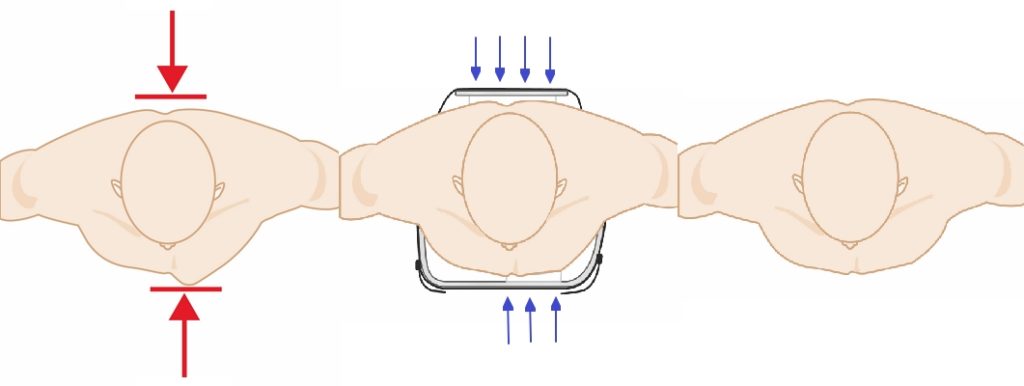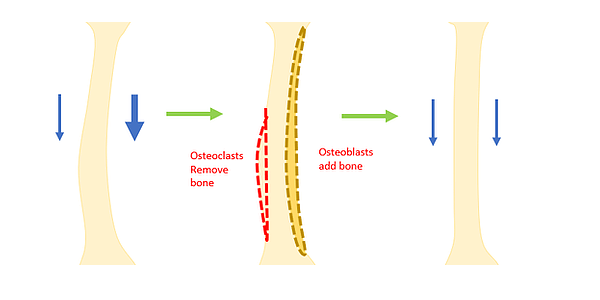The basic principle of pectus and rib flare bracing is to use counteracting biomechanical forces applied to the chest and ribs over a specific length of time to reshape the torso.

In a growing child the chest wall consists of bone and cartilage and is therefore pliable and easier to correct. In adults the growth plates have fused and we are now dealing with bone only. However, some correction is possible in adults through the process of bone remodeling, called “Wolff’s law”. In the late 19th century a German surgeon, Julius Wolff, first described the process of bone remodeling and how it relates to the stress placed on bones. According to Wolff, bones will adapt according to the demands placed on them. This process involves the use of specialized bone cells, called osteoclasts, that absorb old or damaged bone tissue, including things like calcium and collagen. After this, another type of cell called an osteoblast deposits new bone tissue where the old tissue once was.

Therefore, through the application of forces on the chest and ribs, the bones will adapt over time. This process requires the application of appropriately directed force applied over a specific length of time. The key is applying the force over the correct amount of time. Too short a time and the insufficient remodeling has occurred and the chest will resort to its previous shape, However, through the experience of fitting hundreds of patients, we now know there is a limit, for each individual, on how much correction can be achieved and any continuance of force applied beyond this limit will no longer produce any change.
